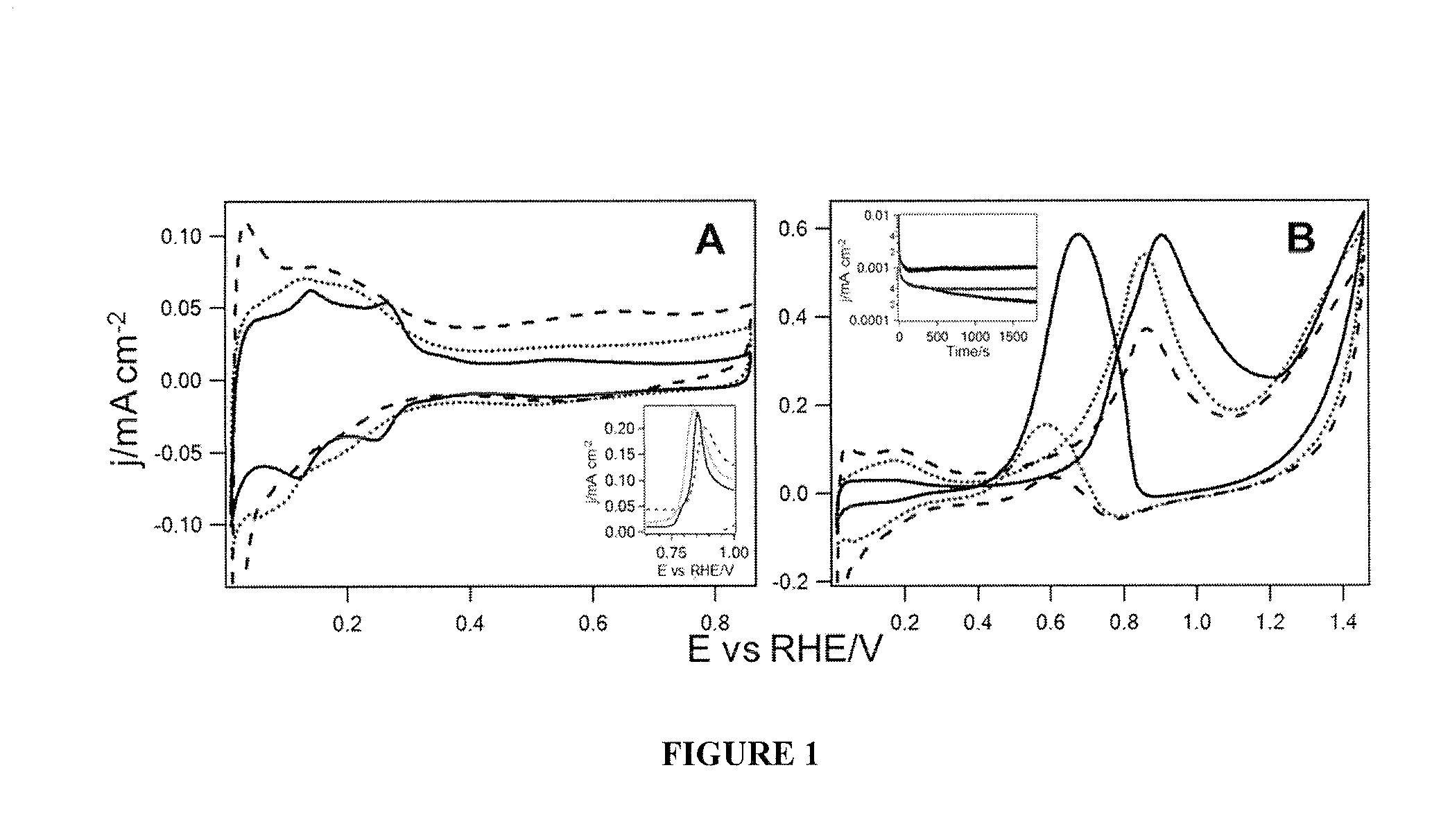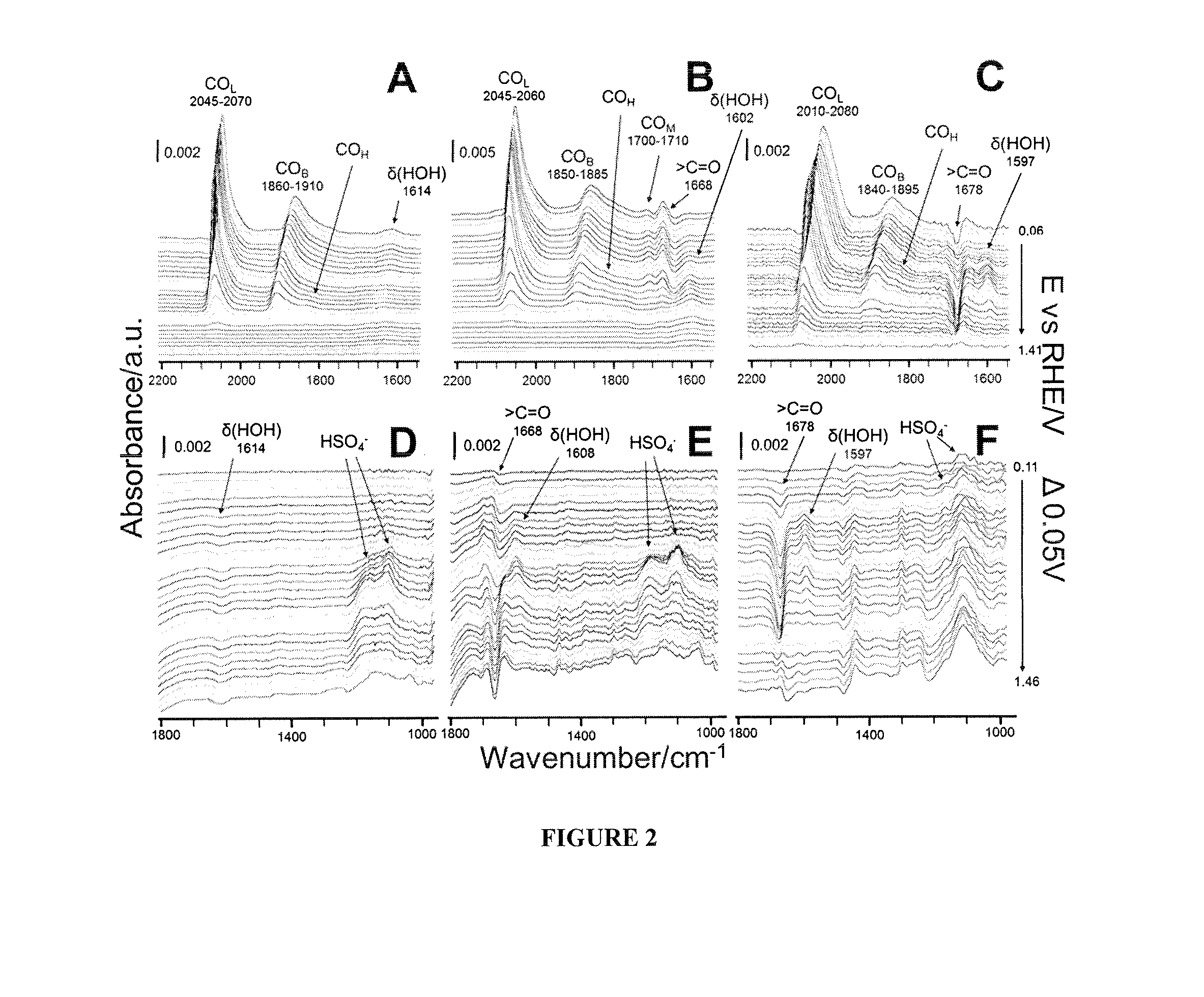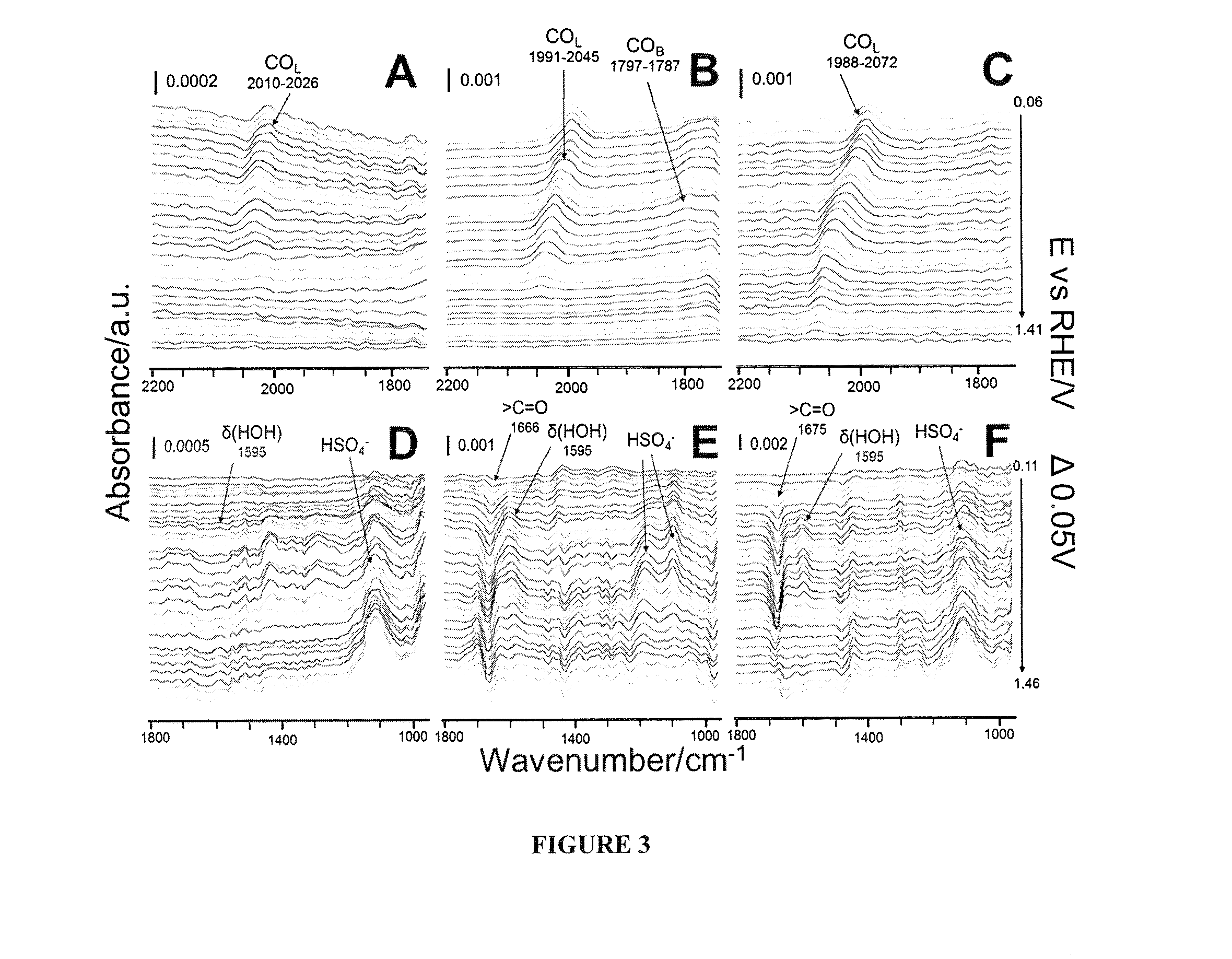Polyvinylpyrrolidone (PVP) for enhancing the activity and stability of platinum-based electrocatalysts
a technology of polyvinylpyrrolidone and electrocatalyst, which is applied in the direction of organic compound/hydride/coordination complex catalyst, physical/chemical process catalyst, cell component, etc., can solve the problem that many catalysts have insufficient activity to completely oxidize, and the handling and storage problems associated with them present significant drawbacks, etc. problems, to achieve the effect of improving intrinsic activity, improving carbon monoxide (co) tolerance, and improving the characteristi
- Summary
- Abstract
- Description
- Claims
- Application Information
AI Technical Summary
Benefits of technology
Problems solved by technology
Method used
Image
Examples
example 1
Electrocatalyst Preparation
[0060]The commercial platinum-based electrocatalyst was carbon-supported Pt at 40 wt % metal loading (Pt / C, courtesy of Johnson-Matthey). The Pt / C was used in the as-received state without further modification, prior to the electrochemical studies and the PVP protection process with PVP with molecular weights of 55,000 g·mol−1 (PVP55) or 360,000 g·mol−1 (PVP360). PVP-protected Pt / C samples were prepared using a modified one-step procedure according to an established polyol based process (Song et al., J. Phys. Chem. B. 109 (2004) 188-193).
[0061]In brief, 2.5 mL of ethylene glycol (EG) was boiled and refluxed for 5 min before the addition of 0.375 M PVP (3 mL total) and 0.0675M Pt (1.5 mL total) in 40 wt % Pt / C to the refluxing solution, which was then refluxed for 1 hr. The purification process included repetitive centrifugation and precipitation in a 3:1 volume mixture of mixed hexanes:ethanol, where the resultant PVP-modified Pt / C was dispersed into ultra...
example 2
Electrochemical Measurements
[0063]The electrochemical measurements were performed in an Ar-blanketed conventional three-electrode electrochemical cell using a CHI 760c potentiostat (CH Instrument, Inc) that was controlled by a computer with CHI software. The cyclic voltammograms (CVs) were recorded with a 50 mV / s scan rate. The electrode potentials herein are given in reference to the RHE, though physically measured with Ag / AgCl (3M) reference electrode (0.26V with respect to RHE in 0.5M H2SO4). The currents reported are normalized with respect to the Pt surface area, which was determined by the hydrogen desorption charge per area, 220 μC / cm2 (B. E. Conway, G. Jerkiewicz, J. Electroanal. Chem. 339 (1992) 123-146). Commercial Ag / AgCl (3M; CH Instrument, Inc) and Pt gauze electrodes were used as the reference and counter electrodes, respectively. The working electrode was comprised of a well-polished 3 mm commercial glassy carbon electrode (GCE) (BASi) that had catalysts deposited ont...
example 3
ATR-SEIRAS Measurements
[0064]The SEIRAS measurements were collected on a Bruker Vector-22 Infrared Spectrometer equipped with a liquid-nitrogen-cooled mercury-cadmium-telluride (MCT) detector that was modified to house an EC-IR cell and an optical reflection accessory with an incident angle of >60° for total attenuation reflection. The obtained spectra are shown in the absorbance units defined as −log (I / I0) where I and I0 are the singe-beam spectral intensities at the measuring potential and the reference potential, respectively. The spectra were collected during a potential step experiment with a 0.05V step size and 100 scans taken at each step with 4 cm−1 spectral resolution. The in-situ electrochemical measurements were performed in an Ar-purged three electrode electrochemical cell using an EG&G 273A potentiostat (Princeton Applied Research) / CHI that was controlled by a computer with CoreWare (Scribner) / CHI software. Commercial Ag / AgCl (3M) (CH Instrument, Inc) and Pt gauze elec...
PUM
| Property | Measurement | Unit |
|---|---|---|
| Nanoscale particle size | aaaaa | aaaaa |
| Nanoscale particle size | aaaaa | aaaaa |
| Molar mass | aaaaa | aaaaa |
Abstract
Description
Claims
Application Information
 Login to View More
Login to View More - R&D
- Intellectual Property
- Life Sciences
- Materials
- Tech Scout
- Unparalleled Data Quality
- Higher Quality Content
- 60% Fewer Hallucinations
Browse by: Latest US Patents, China's latest patents, Technical Efficacy Thesaurus, Application Domain, Technology Topic, Popular Technical Reports.
© 2025 PatSnap. All rights reserved.Legal|Privacy policy|Modern Slavery Act Transparency Statement|Sitemap|About US| Contact US: help@patsnap.com



